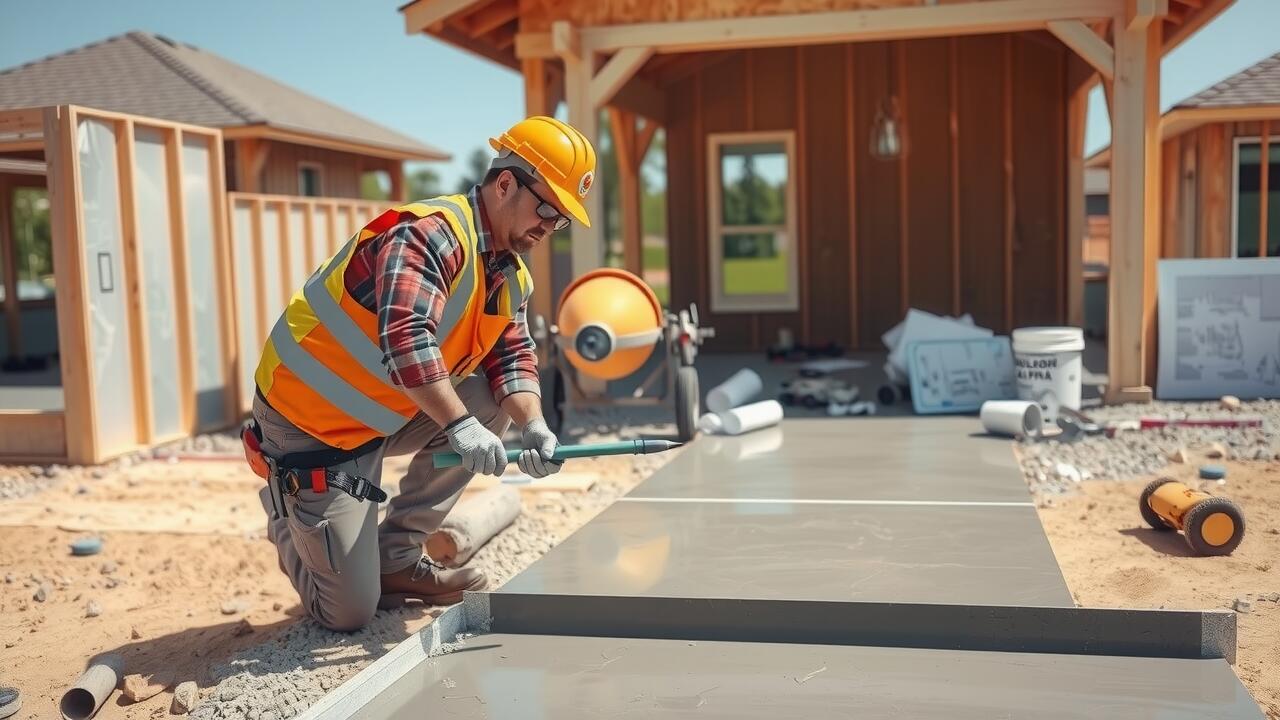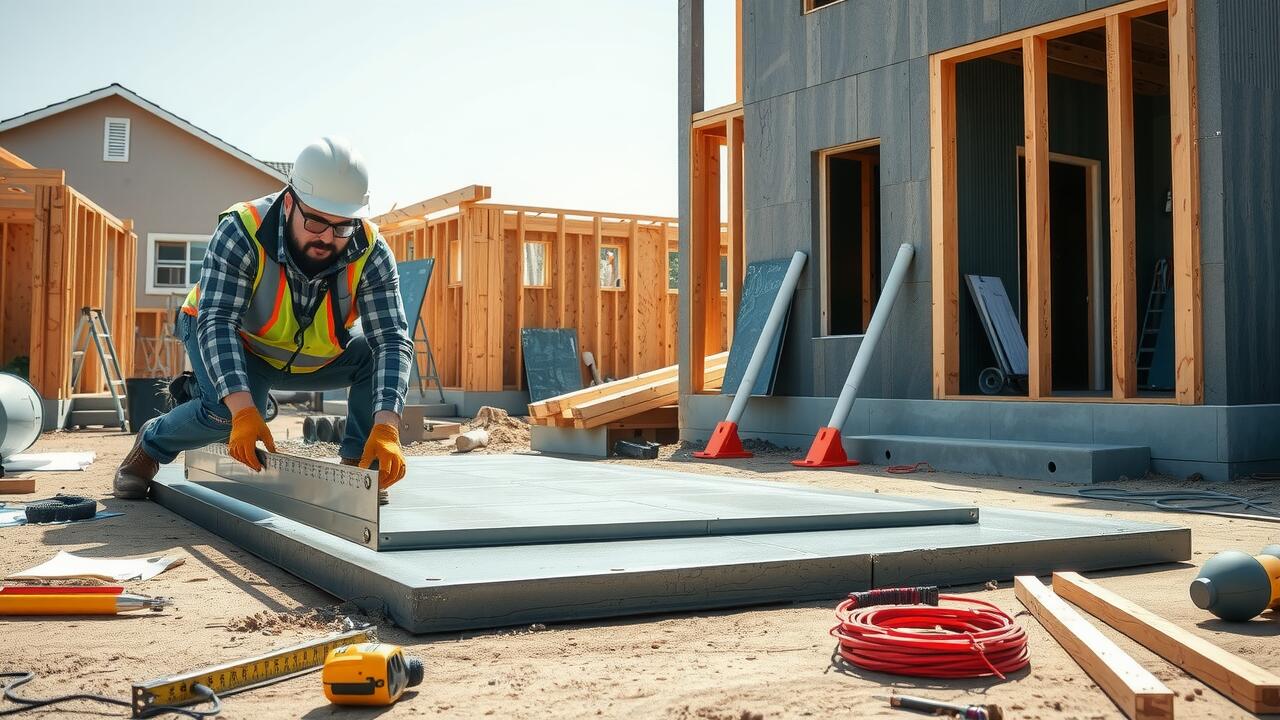Seasonal Variations in Concrete Prices
Concrete prices in California can fluctuate with the seasons, impacting overall costs significantly. During the peak construction months, typically spring and summer, demand for concrete slab installation tends to rise. This increased demand often leads to higher prices, as suppliers may struggle to keep up with the volume. In contrast, fall and winter months usually see a decline in installation activities, which can result in lower prices due to reduced demand.
Weather plays a crucial role in seasonal pricing variations, affecting both material availability and labor productivity. Rainy seasons can delay projects, leading contractors to adjust pricing accordingly. Cold temperatures can also hinder proper curing, which may necessitate the use of additives or specialized techniques, further impacting costs. Awareness of these seasonal factors can help budget more effectively for concrete slab installation, ensuring that homeowners and builders alike prepare for potential fluctuations in pricing.
How Weather Affects Installation and Costs
Weather can significantly impact the timeline and costs associated with concrete slab installation. Rain or excessive humidity can delay the curing process, extending the overall project duration. On the other hand, extremely hot or cold temperatures can also pose challenges. High temperatures may lead to rapid drying, which can cause cracking if not managed properly, while cold weather can impede the curing process, requiring additional measures like heating blankets or additives.
Furthermore, seasonal changes can influence demand for concrete contractors, with peak seasons often leading to increased prices due to higher competition for available resources. Winter months may see lower demand, but the accompanying weather conditions can result in higher operational costs. Planning a concrete slab installation during favorable weather conditions can help avoid these extra expenses and ensure a smoother process.
Choosing the Right Concrete Mix
When considering concrete slab installation, selecting the appropriate concrete mix is essential for durability and performance. Different types of mixes cater to various needs, such as strength, workability, and surface finish. Standard concrete mixes typically consist of cement, water, and aggregates, but specific blends can enhance properties like sliding resistance or air entrainment for freeze-thaw cycles. Understanding these variations helps homeowners make informed decisions based on their project requirements and local climate conditions.
Price differences among concrete mixes can also affect the overall budget for slab installation. Basic mixes tend to be more affordable, while specialized blends may come at a premium due to advanced materials or additives. It’s crucial to assess the long-term benefits versus initial costs when choosing a mix for concrete slab installation. Consulting with a professional can provide insight into the best options tailored to individual project needs and financial considerations.
Types of Mixes and Their Price Differences
The type of concrete mix used for a slab significantly impacts the overall cost of installation. Standard mixes, typically composed of cement, water, and aggregates, tend to be more affordable. Specialty mixes, such as those with added polymers or decorative elements, can increase both material and labor expenses due to their unique properties and the additional expertise needed for installation. Depending on the complexity and durability requirements of the project, homeowners may opt for a higher grade mix that can withstand various stresses, which further adjusts the pricing structure.
When considering concrete slab installation, it is crucial to evaluate the purpose of the slab. For example, a residential patio may require a different mix than a structural foundation. Differences in performance characteristics, such as strength and finish appearance, also play a role in price. Homeowners should seek guidance from local contractors who can recommend suitable mix types based on the specifics of the installation site and intended use. This tailored approach ensures both quality and cost-effectiveness in the long run.
Long-term Value of Concrete Slabs
Concrete slabs are widely recognized for their durability and longevity, making them a wise investment for homeowners and businesses alike. When considering the long-term value of a concrete slab, factors such as strength and resistance to wear come into play. Properly installed slabs can last decades with minimal upkeep, saving money in replacement costs over time. The initial expense of concrete slab installation often proves worthwhile, as it mitigates the risk of frequent repairs that are common with other materials.
Moreover, concrete slabs offer benefits that extend beyond sheer durability. They provide excellent thermal mass, which can help regulate indoor temperatures, leading to lower energy bills. Additionally, concrete is low-maintenance, requiring only periodic sealing to protect against moisture and stains. This further enhances the long-term value by reducing ongoing maintenance costs while preserving the aesthetic appeal of the installation. Overall, investing in high-quality materials and professional concrete slab installation pays off in the long run.
Maintenance Costs Over Time
Concrete slabs are known for their durability and longevity, which contribute to their attractiveness for various construction projects. Over time, maintenance costs tend to be minimal compared to other materials. Regular inspections can help identify small issues before they escalate. Simple tasks include sealing the surface to prevent water infiltration and repairing any minor cracks early on.
The initial investment in concrete slab installation can lead to significant savings over the years. While concrete may require occasional upkeep, such as resurfacing or re-sealing, these expenses are typically less frequent and less costly than those associated with materials like wood or asphalt. Many homeowners appreciate the long-term benefits that a well-maintained concrete slab provides, providing a stable foundation for a variety of uses.
FAQS
What is the average cost of a concrete slab in California?
The average cost of a concrete slab in California typically ranges from $4 to $12 per square foot, depending on various factors such as thickness, type of mix, and local labor rates.
Do weather conditions affect the cost of concrete slabs?
Yes, weather conditions can impact the cost of concrete slabs. Extreme temperatures, rain, and humidity can affect both the installation process and the curing time, potentially increasing labor costs and material expenses.
What are the different types of concrete mixes available?
There are several types of concrete mixes available, including standard mix, high-strength mix, and decorative mix. Each type has different price points, with decorative mixes generally costing more due to added materials and finishing techniques.
How much maintenance should I expect for a concrete slab over time?
The maintenance costs for a concrete slab can vary, but typically, you can expect to spend around 1% to 3% of the slab’s initial installation cost annually on maintenance, including sealing, cleaning, and repairs.
Are there any long-term benefits to investing in a concrete slab?
Yes, investing in a concrete slab can provide long-term benefits such as durability, low maintenance requirements, and increased property value, making it a cost-effective option in the long run.

